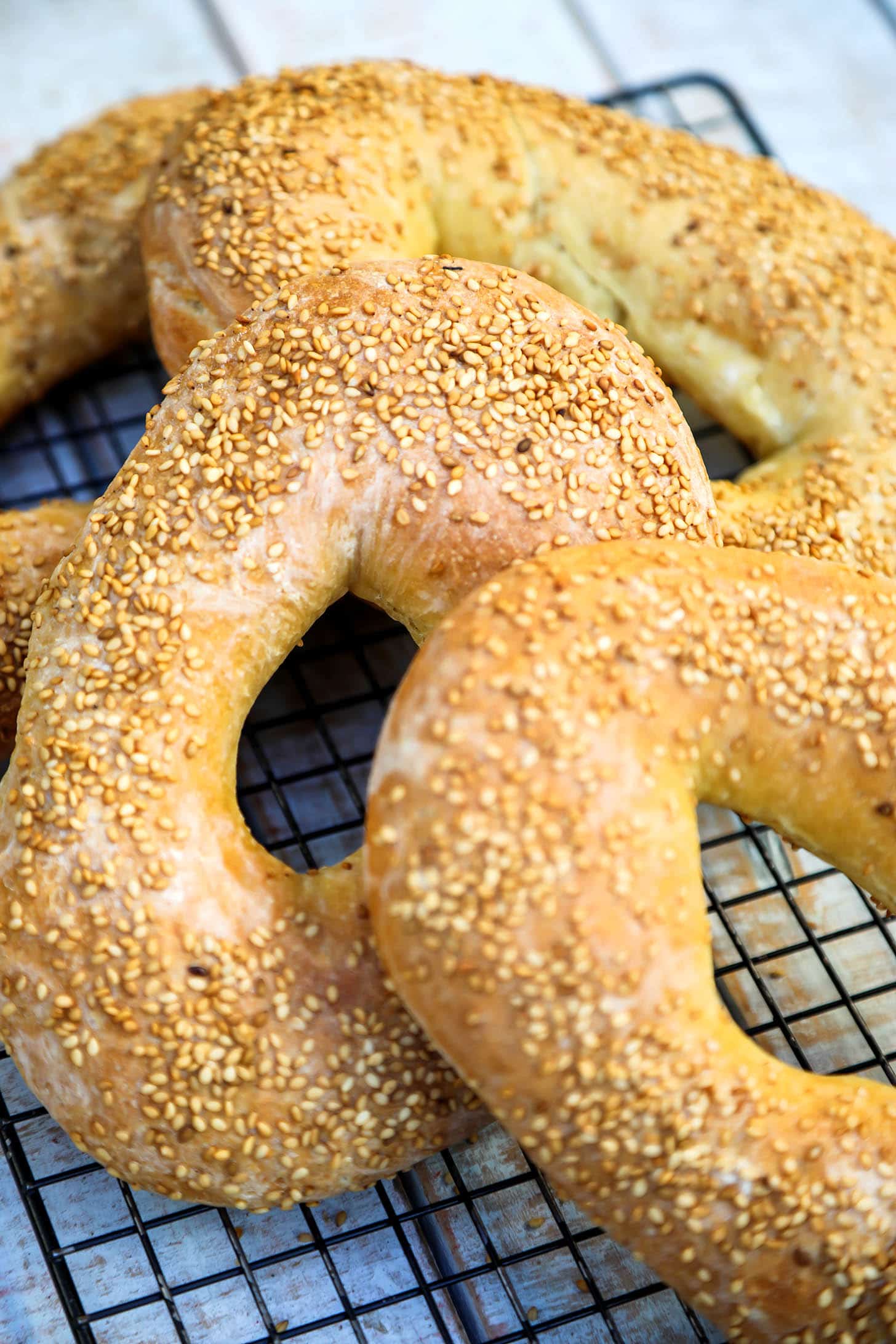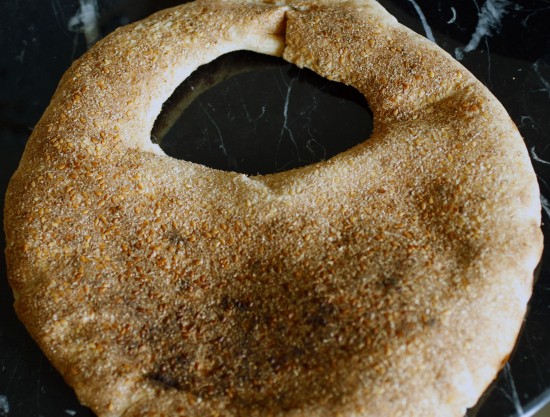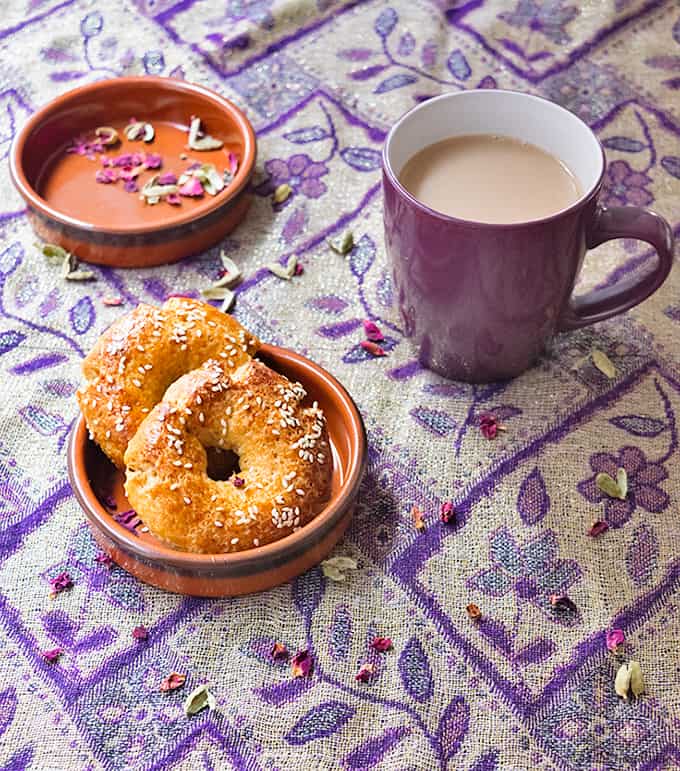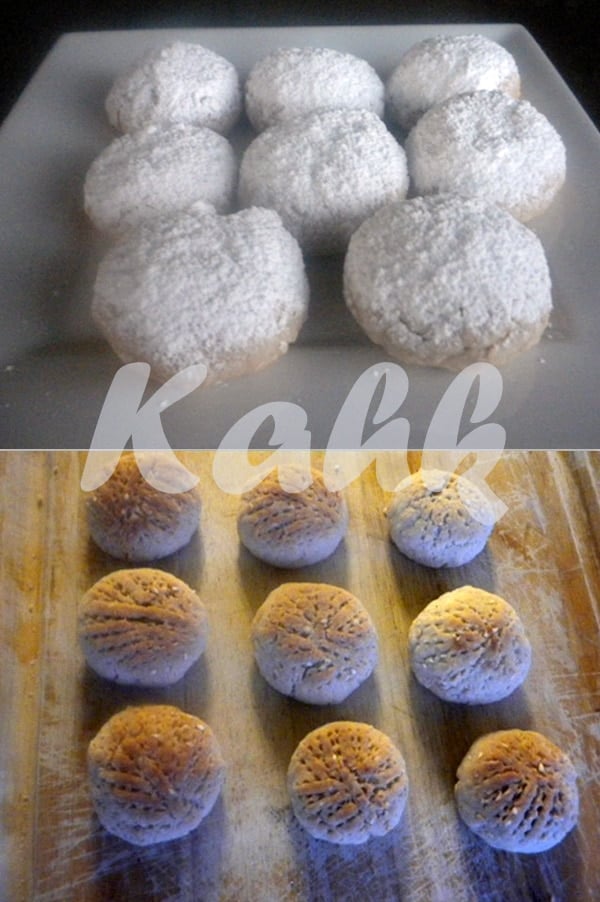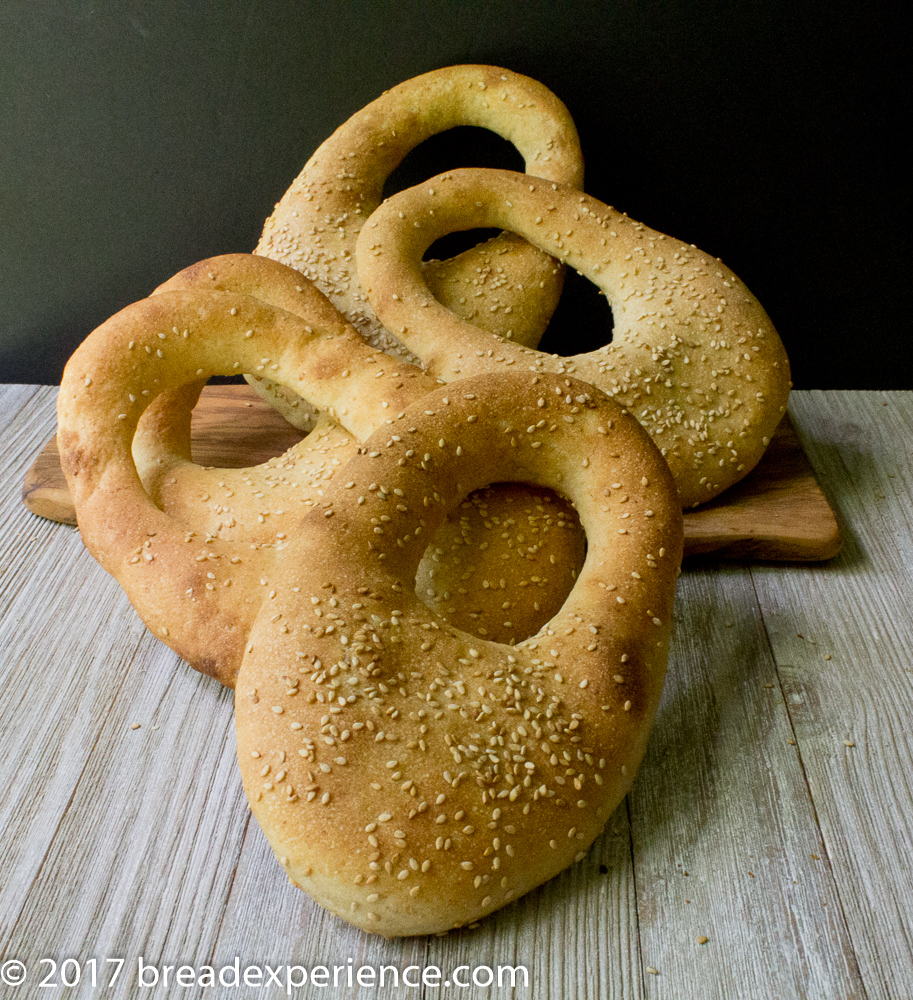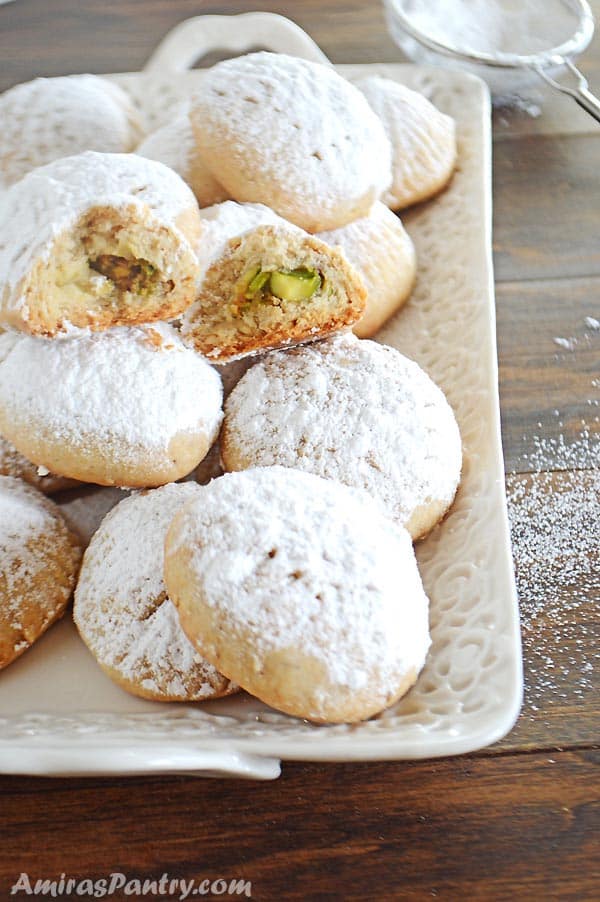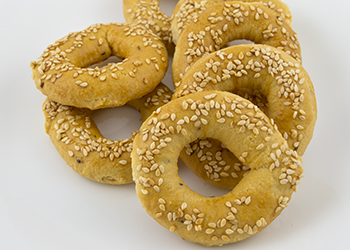Ka'ak
kaak, kahk, كعك
Ka'ak or kahqa is the common Arabic word for cake or biscuit, in its various senses, and can refer to several different types of baked goods produced throughout the Arab world and the Near East. The bread, in Middle Eastern countries, is similar to a dry and hardened biscuit and mostly ring-shaped. Similar pastry, called "kue kaak", is also popular in Indonesia. Ka'ak is first attested to in the Kitab al Wusla il al Habib, which originates from Syria in the 13th century. The Kitab al Wusla il al Habib gives three recipes for Ka'ak. Ka'ak can refer to a bread commonly consumed throughout the Levant that is made in a large ring-shape and is covered with sesame seeds. Fermented chickpeas are used as a leavening agent. Widely sold by street vendors, it is usually eaten as a snack or for breakfast with za'atar. In Palestinian Jerusalem, it is sometimes served alongside oven-baked eggs and falafel.[better source needed] Palestinians from Hebron to Jenin consider ka'ak al-Quds (Jerusalem ka'ak) to be a unique specialty good, and those from the city or visiting there often buy several loaves to give to others outside the city as a gift.
Source: Wikipedia
Recipes
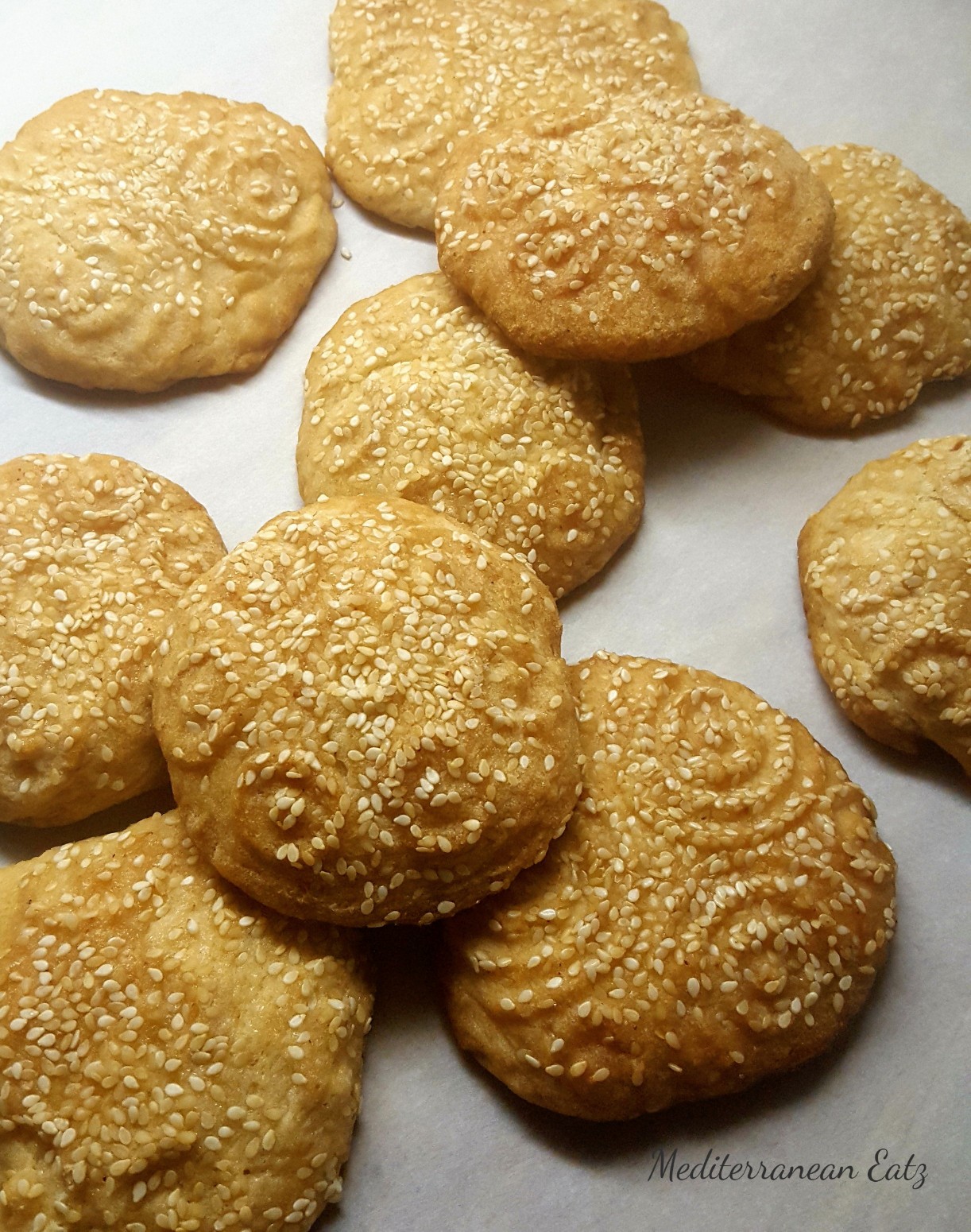
Traditional Lebanese Kaak - Mediterranean Eatz
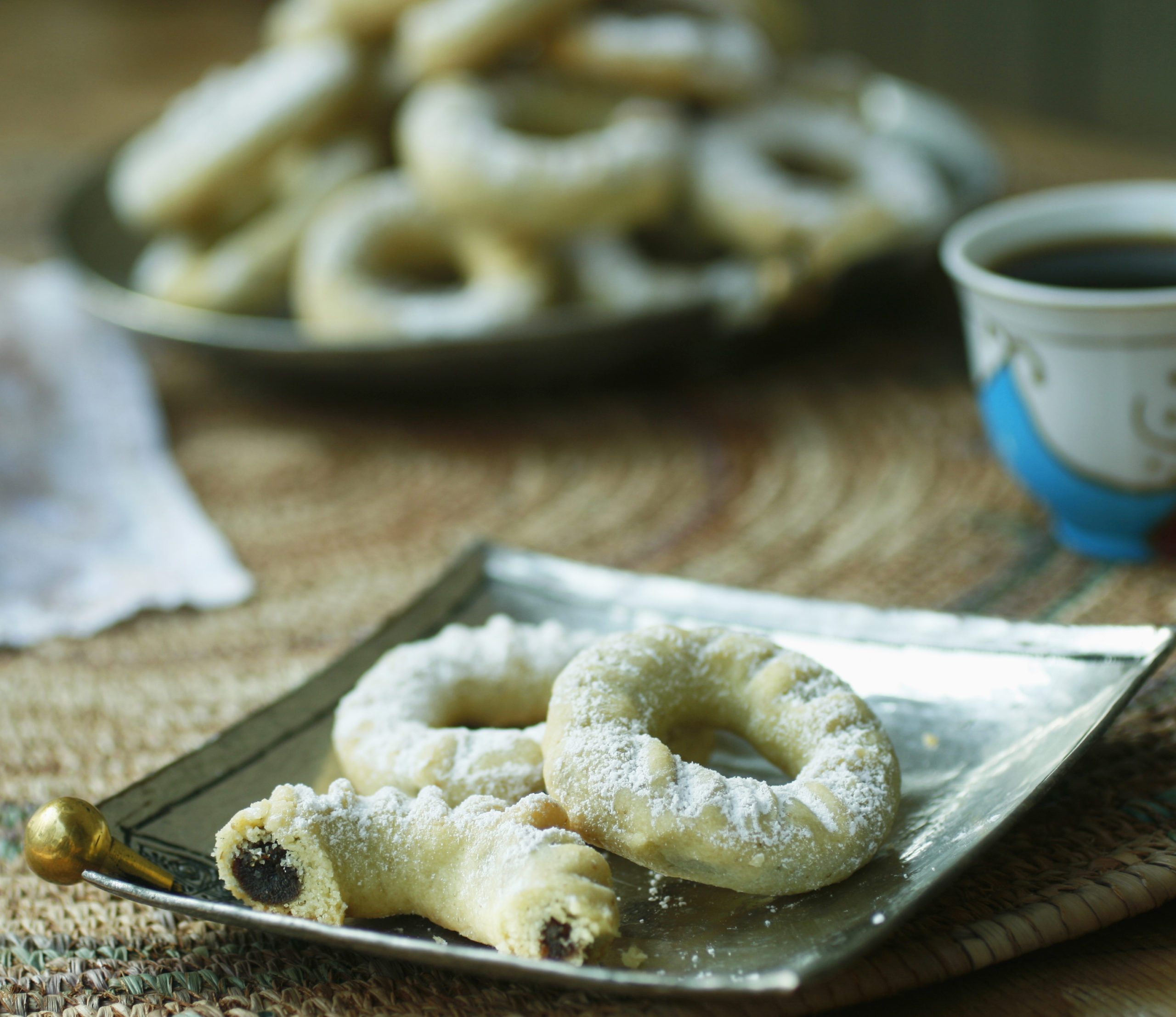
Semolina cookies with date (Maamoul) - Taste of Beirut

Ka'ak - Traditional and Authentic Yemeni Recipe | 196 flavors






